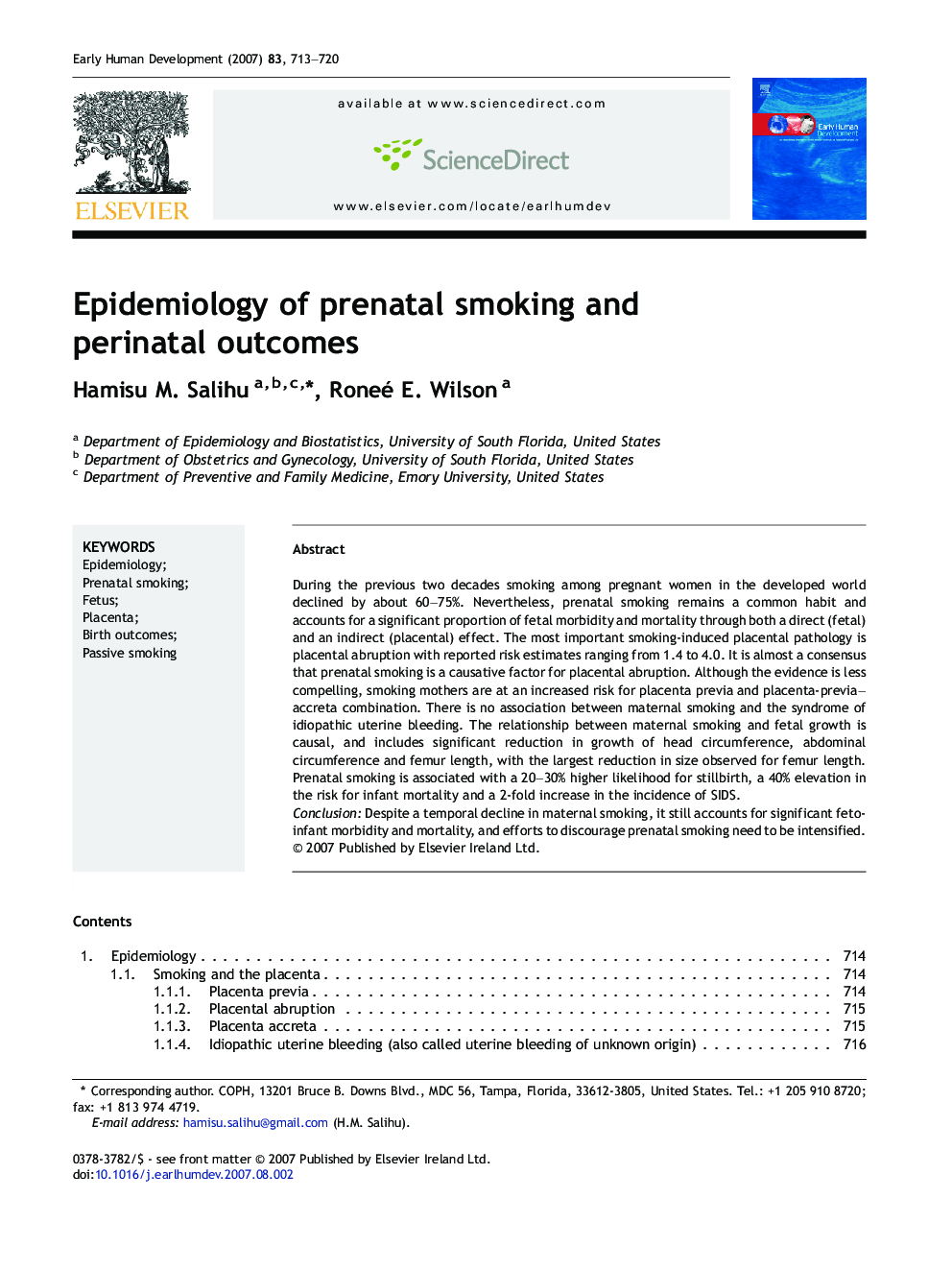| Article ID | Journal | Published Year | Pages | File Type |
|---|---|---|---|---|
| 3918022 | Early Human Development | 2007 | 8 Pages |
During the previous two decades smoking among pregnant women in the developed world declined by about 60–75%. Nevertheless, prenatal smoking remains a common habit and accounts for a significant proportion of fetal morbidity and mortality through both a direct (fetal) and an indirect (placental) effect. The most important smoking-induced placental pathology is placental abruption with reported risk estimates ranging from 1.4 to 4.0. It is almost a consensus that prenatal smoking is a causative factor for placental abruption. Although the evidence is less compelling, smoking mothers are at an increased risk for placenta previa and placenta-previa–accreta combination. There is no association between maternal smoking and the syndrome of idiopathic uterine bleeding. The relationship between maternal smoking and fetal growth is causal, and includes significant reduction in growth of head circumference, abdominal circumference and femur length, with the largest reduction in size observed for femur length. Prenatal smoking is associated with a 20–30% higher likelihood for stillbirth, a 40% elevation in the risk for infant mortality and a 2-fold increase in the incidence of SIDS.Conclusion:Despite a temporal decline in maternal smoking, it still accounts for significant feto-infant morbidity and mortality, and efforts to discourage prenatal smoking need to be intensified.
